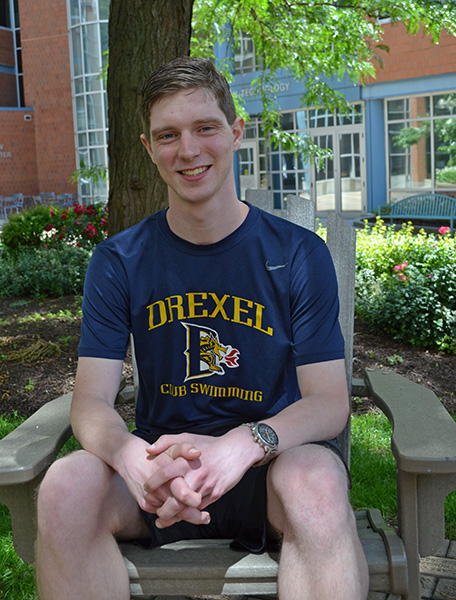
Will Culbertson
Drexel University is known throughout the world for its cooperative program, which celebrates its 100th Anniversary this year. Here at the College of Engineering, 99% of students fulfill at least one co-op during their undergraduate careers. But what exactly does a co-op do all day? How do they get to work? Who manages them? And what time is lunch? This column looks at individual student experiences for an hour-by-hour deconstruction of the co-op workday.
This month, we introduce pre-junior Will Culbertson, who is pursuing his degree in the Department of Mechanical Engineering and Mechanics (MEM). Culbertson is currently on a co-op at the Belcan Corporation doing contract work for Boeing under the 747-8 program.
Name: Will Culbertson
Year: Pre-Junior, Class of 2021, Department of Mechanical Engineering and Mechanics; member, Drexel Chapter of the American Institute of Aeronautics and Astronautics
Co-op: Belcan Corporation contract work for Boeing at the Philadelphia Design Center
When: Current, April 1 through Sept. 20, 2019
| 6:20 a.m. |
Wake up, leave house in King of Prussia, drive to work carpooling with another employee. Arrive about 6:45 am after a relatively easy commute. “Mornings aren’t bad. It’s the afternoons that kill you.” |
| 6:50 a.m. |
Begin work. Meet with manager and Boeing lead. The lead is a 30-year veteran who hands out daily assignments; the manager handles administrative duties. Go back to desk and work for two hours on whatever the assignment is. Work in design with a program called CATIA making brackets. CATIA is a CAT system specifically geared towards aerospace that does all the shaping for the sheet metal and associated 3D objects so they can then be fabricated and put into the airframe. |
| 9 a.m. |
Boeing allocates two 15-minute breaks aside from lunch, and this is the first. Get some food. Talk with the other co-ops in a group of eight, only one of which is not a Drexel student. Half the group is on his project; three are on a Phantom Works Project. |
| 9:30 a.m. |
Back to the desk doing CAD models for the next two or three hours, getting experience working on aircraft parts hands-on with engineers who have worked in design. “I always wanted to work in aviation. Now I’m working on aircraft—how it’s assembled, how it works, how Boeing manages its large pieces of equipment. Some take thousands and thousands of parts.” |
| 11:55 a.m. |
Gather up the rest of the co-ops and go down to lunch at the cafeteria—salads, hot lunch, sandwiches. “I normally get the hot lunch, personally. And Wednesday is wing day.” |
| 12:40 p.m. |
Back to desk to “pester my Boeing lead to make sure I’ve done the work correctly,” and seek out other assignments. Current assignment is a large project compartmentalized into sections; work on it section by section. “It’s very easy to get lost in the system because it’s such a large company, so you have to be very proactive about talking to your lead and asking people on your team—am I doing it right?” Keep working on the assignment until about 3 or 4 p.m. |
| 4 p.m. |
Second 15-minute break to play foosball with the other co-ops. After that, go back to desk, clean up, get ready to leave for the day. Co-ops can only be on the Boeing campus between 6 am and 6 pm. |
| 4:15 p.m. |
Reverse commute back home. On Mondays and Wednesdays, come back to Drexel University for club swimming; Tuesday and Thursday nights, “odds and ends.” |
TAKEAWAY MESSAGE: “The attitude I take in this co-op is that if you sit there and shoot from the hip, it is going to take a lot more time than if you just ask someone in the first place. You don’t have to ask how to draw lines on a CAD machine, but you do have to ask them about design materials and other matters. You’re talking to people who used to draw these things by hand. They’ve seen the evolution of CAD, so they know how to do specialized things. They’ve seen how things develop. As much as you can learn from them, you should. But your Boeing leads and managers, they don’t have a lot of time, so you have to be very specific about what you ask.
“My takeaway? I want to say, be pro-active. But you can also get too assertive. The way I typically do things is, I try to have an appropriate level of questions.”